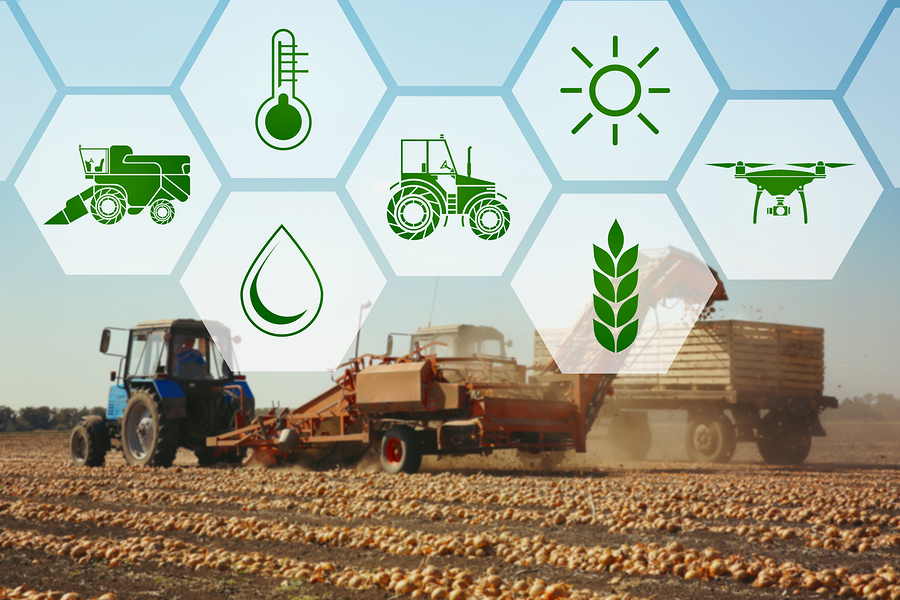From agriculture to recipes and labelling, no part of the agri-food industry is exempt from technological innovations, particularly biotechnology and nanotechnology. Here’s how the farmer, industrialist, cook or consumer benefits from these technological advances.
Technology in our fields
Given the scarcity of arable land and the necessity of feeding an ever-growing global population, agriculture must be innovative everywhere: urban agriculture, as well as underground agriculture (hydroponic farms in the old London undergrounds) requires technological prowess. In addition, precision farming is of some interest to farmers and ranchers. For example, in Canada, 90% of farms over 10,000 acres are using self-guiding technology and GPS, and 50% use GIS mapping, not to mention those using drones, georeferenced sampling, or the use of applications (e.g., RAMAS, developed by Resson, a New Brunswick company) which, from data collected on crop condition, identifies abnormalities, invasive plants, diseases, etc. Better profitability results. For example in 1981, Canada produced 7.3 million kilolitres of milk from 1.8 million dairy cows, compared to 8.4 million kilolitres in 2016 with 939,071 cows.
Increasingly innovative agri-food companies
Food processors are using biotechnology to transform the genes of certain plant species in order to improve quality – so we can taste golden rice enriched with vitamin A or enjoy Arctic apples that do not go brown once cut – and are also using nanotechnology to work on foodstuffs or materials it is in contact with – nanosensors, for example, that detect microbes or aromas related to fruit maturity. DNA testing is very useful to identify allergens or to detect attempts at adulteration by unscrupulous agribusinesses trying to pass off horse meat for beef. Food preservation is not left out. HPP (high pressure processing), also called cold pasteurization, provides longer preservation of food and less deterioration of food due to deactivation of certain enzymes, without changing the taste and texture.
When technology serves the consumer
Technology also has a place in food quality, its price and even how it’s cooked. As evidence, look at microchips put in labels to know when the product deteriorates, or interactive sensors to lower the price as the expiry date is approaching. To conclude, we cannot talk about technology without mentioning the internet. Indeed, websites make it possible to meet the new demands of consumers. For those who wish to consume local or seasonal products (locavore movement), they will appreciate sites that put them in direct contact with the producers. For people who want to have a recipe on-the-spot for diners with a gluten-free or vegetarian diet, a quick visit to a cooking site such as AllRecipes from a smartphone will do the trick. For those who are allergic to waste, they will appreciate websites that offer location-based discounts or others, such as LeftoverSwap, that offer left-overs at very competitive prices.
As always, new technologies can tend to be divisive. As the subject relates to the all the more sensitive field of food, the various players incorporating new technologies must be transparent, ethical and good educators. A word to the wise, however!
